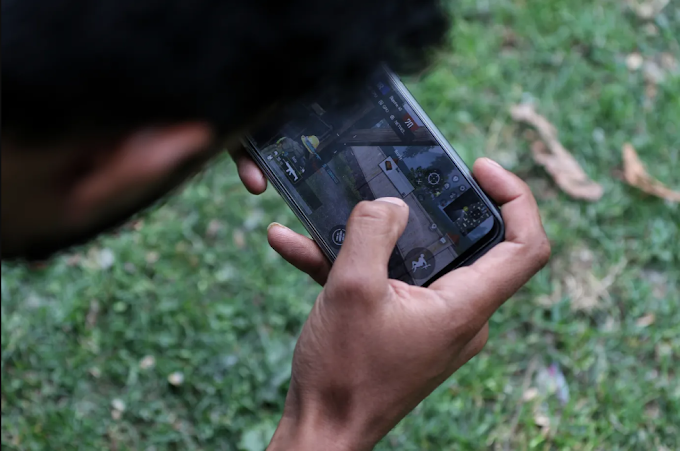Introduction
Optical illusions have long
fascinated and intrigued the human mind. These visual puzzles challenge our
perception, often revealing unexpected insights into our cognitive processes.
In recent years, researchers have explored the relationship between optical
illusions and psychological traits, such as defensiveness and confidence. The
"What You See First" optical illusion, which presents an ambiguous
image that can be interpreted in multiple ways, has gained popularity as a tool
to assess personality traits. This article delves into the world of optical
illusions and their connection to psychology, exploring the deeper meanings
behind what you see first in this unique personality test.

1.
Optical
Illusions: Tricks of Perception
1.1 The Fascination of Optical Illusions
Optical illusions are visual stimuli that challenge our brain's ability to accurately interpret sensory information. They occur when our brains misinterpret visual cues, leading us to perceive something that is not actually present in the image. This phenomenon has intrigued scientists, artists, and psychologists for centuries, as it provides a window into the complex processes underlying human perception.
1.2 Mechanisms behind Optical Illusions
Optical illusions exploit various cognitive and perceptual mechanisms, such as size constancy, color contrast, and figure-ground relationships. These illusions highlight how our brain constructs our perception of reality based on limited sensory input and past experiences. Understanding the mechanisms behind optical illusions helps us appreciate the intricate interplay between visual input and cognitive processing.
2.
Personality
Traits and Psychological Assessment
2.1 The Quest for Self-Understanding
Throughout history, humans have sought ways to gain insight into their personalities and inner selves. Psychologists have developed numerous methods to assess personality traits, including self-report questionnaires, behavioral observations, and projective tests. The "What You See First" optical illusion test represents a creative approach to exploring personality traits by capitalizing on the ambiguity inherent in visual stimuli.
2.2 Defensiveness and Confidence: Core Personality Dimensions
Defensiveness and confidence are essential dimensions of personality that influence how individuals perceive and interact with the world. Defensiveness reflects the tendency to protect oneself from perceived threats or criticism, often leading to guarded behavior. Confidence, on the other hand, is a belief in one's abilities and judgments, contributing to assertiveness and a willingness to embrace challenges.
3.
Decoding
the "What You See First" Optical Illusion Test
3.1 The Setup: Ambiguous Imagery
The "What You See First" optical illusion presents an image that can be interpreted in multiple ways, depending on the viewer's perspective. A classic example is the image of a vase or two faces in profile. The image taps into the brain's natural inclination to switch between multiple interpretations, revealing subconscious cognitive processes.
3.2 Defensiveness Interpretation
Individuals who initially perceive an image related to defensiveness may see elements that symbolize protection, such as walls, shields, or barriers. This interpretation suggests a cognitive focus on self-preservation and caution, potentially indicating a predisposition towards defensiveness in interpersonal interactions.
3.3 Confidence Interpretation
Alternatively, those who first see an image associated with confidence may notice representations of openness, strength, or boldness. These individuals might possess a cognitive bias towards embracing challenges, taking risks, and asserting themselves, reflecting a greater degree of self-confidence.
4.
Psychological
Implications and Applications
4.1 Insight into Self-Perception
The "What You See First" optical illusion test provides a unique opportunity for individuals to gain insights into their subconscious thought patterns and underlying personality traits. The interpretation of the ambiguous image can reveal hidden aspects of one's self-perception, shedding light on tendencies that might have otherwise remained unnoticed.
4.2 Recognizing Defensiveness and Building Confidence
For individuals who see defensiveness-related imagery, the test outcome could serve as a catalyst for introspection and personal growth. Awareness of defensiveness tendencies can prompt individuals to reflect on their interactions with others and explore strategies for healthier communication. Those who identify with the confidence interpretation can leverage this insight to cultivate their self-assuredness and resilience in various life domains.
4.3 Ethical Considerations
While the "What You See First" test offers intriguing insights, it is important to approach its interpretation with caution. Personality traits are multifaceted and complex and a single optical illusion cannot capture the entirety of an individual's personality. Psychologists emphasize the need for comprehensive assessment methods and professional guidance when exploring personality traits and making consequential life decisions.
5.
Future
Directions and Conclusion
5.1 Advancing Optical Illusion Assessments
As research in psychology and neuroscience progresses, the link between optical illusions and personality traits may become more nuanced. Future studies could investigate how different types of optical illusions relate to a broader range of personality dimensions, providing a more comprehensive understanding of their interplay.
5.2 Embracing Subjectivity and Complexity
The "What You See First" optical illusion test reminds us of the intricacies of human perception and personality. While this test can offer intriguing insights, it is essential to recognize that personality is multifaceted and influenced by various factors beyond a single visual stimulus. Embracing the complexity of human nature encourages a more holistic and compassionate approach to self-discovery and personal growth.
Conclusion
The "What You See First" optical illusion test bridges the worlds of perception and personality, offering a unique lens through which individuals can explore their tendencies towards defensiveness and confidence. Optical illusions, with their ability to deceive and intrigue, provide a captivating platform to delve into the depths of the human mind. While this test provides an engaging perspective on personality, it is crucial to remember that the rich tapestry of personality traits requires a more comprehensive approach to self-understanding. As we continue to unlock the mysteries of the human psyche, optical illusions stand as captivating tools for unraveling the intricate relationship between the mind's eye and the complexities of personality.

.png)





